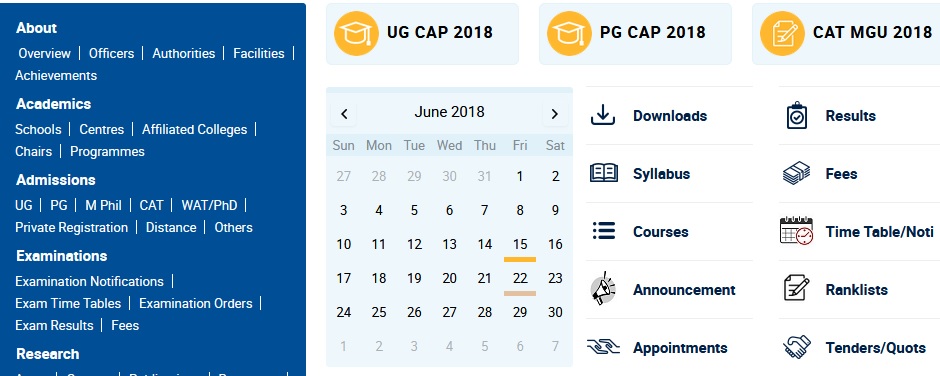MCSSE105-3 Advanced Databases M.Tech Model Question Paper : mgu.ac.in
Name of the College : Mahatma Gandhi University
Department : Computer Science and Engineering
Subject Code/Name : MCSSE 105-3/Advanced Databases
Sem : I
Website : mgu.ac.in
Document Type : Model Question Paper
Download Model/Sample Question Paper :
I : https://www.pdfquestion.in/uploads/mgu.ac.in/5029-1-MCSSE%20105-3%20ADVANCED%20DATABASES%20-1.doc
II : https://www.pdfquestion.in/uploads/mgu.ac.in/5029-2-MCSSE%20105-3%20ADVANCED%20DATABASES%20-2.doc
MGU Advanced Databases Question Paper
M.TECH. Degree Examination :
Branch: Computer Science and Engineering
Specialization: Computer Science and Systems Engineering
Related : MGU MCSSE105-1 Embedded Systems Design M.Tech Model Question Paper : www.pdfquestion.in/5028.html
June 2013
Model Question Paper – II
First Semester :
MCSSE 105-3 Advanced Databases
(Regular – 2013 Admissions)
Time: 3 hours
Maximum Marks: 100
1. (a) What is the relationship between a type and its subtype in a type hierarchy? (10 marks)
(b) Explain ODBMS examples and its applications. (15marks)
OR
2. (a) Explain type extents and queries. (10 marks)
(b) What is meant by concurrency controls?. Explain with example (15 marks)

3. (a) Why is data replication useful in Distributed Database and What typical units of data are replicated? (10 marks)
(b) Explain about query processing and Optimization in Distributed Databases. (15 marks)
OR
4. (a) What are the advantages of a distributed database management system over a centralized DBMS? (10 marks)
(b) Explain Concurrency Control and Recovery in Distributed Databases. (15 marks)
5. (a) Explain in detail about the various Presentation technologies available in XML.
(15 marks)
(b) Create a DTD for mark statement of a student. Write a program to retrieve the elements and attributes of the XML document and display the mark statement in a table format. (15 marks)
OR
6. (a) Explain in detail about the various XML parsers with suitable examples . (10 marks)
(b) Explain in detail about the various Transformation technologies available in XML. (10 marks)
7. (a) What is the significance of GIS, and how it relates to geographic information systems? (15 marks
(b) Discuss about mobile database and multimedia database with examples. (10 marks)
OR
8. (a) With an example explain the working of genome data management. (10 marks)
(b) Explain in details Spatial database and temporal database . (15 marks)
May 2013
M.TECH. DEGREE EXAMINATION :
MCSSE 105-3
ADVANCED DATABASES :
(Regular – 2013 Admissions)
Time: 3 hours
Maximum Marks: 100
1. (a) What are the origins of the object-oriented approach?. (15marks)
(b) Explain the encapsulation of operations. (10 marks)
OR
2. (a) Explain about OQL. (10 marks)
(b) Discuss in detail about Persistent programming languages. (15 marks)
3. (a) What are the main reasons for and potential advantages of distributed databases? (8 marks)
(b) What additional functions does a DDBMS have over a centralized DBMS (9 marks)
(c ) What is the difference between synchronous and asynchronous replication. (8 marks)
OR
4. (a) Explain Distributed Catalog Management. (10 marks)
(b) Explain Replication and Allocation Techniques for Distributed Database systems (15 marks)
5.(a ) Discuss in detail about XML DTDs, and their types with suitable examples. (15 marks)
(b) When is an XML document well-formed? When is an XML document valid? (10 marks)
OR
6. (a) Discuss in detail about various types of Schemas with suitable examples. (15 marks)
(b) Explain in detail about Indexes for text data . (10 marks)
7.(a) Explain Mobile Databases. (15 marks)
(b) What are the distinguishing characteristics of the scientific method?. Discuss the relevance of each to GIS. (10 marks) OR
8. (a) With an example explain the process of multimedia database (10 mark)
(b) Explain in details the genome data management. (15 marks)
Syllabus
Module 1 :
Object-Oriented Databases : Overview of Object-Oriented concepts, Object identity, Object structure, and type constructors, Encapsulation of operations, Methods, and Persistence, Type hierarchies and Inheritance, Type extents and queries, Complex objects;
Database schema design for OODBMS; OQL, Persistent programming languages; OODBMS architecture and storage issues; Transactions and Concurrency control, Example of ODBMS.
Module 2 :
Distributed Databases and Client-Server Architectures – Distributed Database Concepts, Data Fragmentation, Replication, and Allocation Techniques for Distributed Database Design, Types of Distributed Database Systems, Query Processing in Distributed Databases Overview of Concurrency Control and Recovery in Distributed Databases, An Overview of 3-Tier Client-Server Architecture, Distributed Databases in Oracle.
Module 3 :
Databases on the Web and Semi Structured Data : Web interfaces to the Web, Overview of XML; Structure of XML data, Document schema, Querying XML data; Storage of XML data, XML applications; The semi structured data model, Implementation issues, Indexes for text data.
Module 4 :
Emerging Database Technologies and Applications – Introduction to Big data, Parallel processing and query optimization, Hadoop, MAP REDUCE, Mobile Databases, Multimedia Databases, Geographic Information Systems (GIS), Temporal Databases, Spatial Databases, Genome Data Management.
Can I get the solution of this sample paper please?